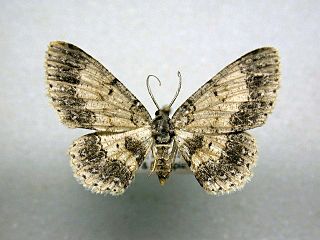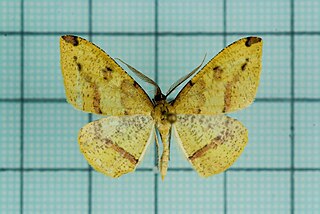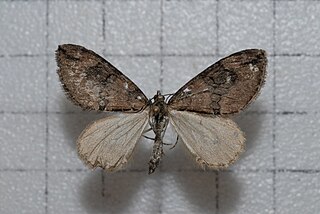
The Lord Howe gerygone or Lord Howe gerygone flyeater was a small bird in the family Acanthizidae, brown and greyish in color. Its head was brown apart from a pale grey eye-ring and a grey throat and chin, many parts of the animal varied to the colour of yellow, this being apparent in its bright yellow belly. It made its home in the canopies of the island's forest until the early 20th century. The bird has had a variety of monikers: locally, it was known as the "rain-bird" due to its activity after the rains, or the "pop-goes-the-weasel", due to the similarity of its song to the well-known tune. The bird was endemic to Lord Howe Island in the Tasman Sea. There have been no records of the species since 1928, and it is considered to be extinct. Its extinction is almost certainly due to predation by black rats which were accidentally introduced to the island in 1918 following the shipwreck of the SS Makambo there.
The Espíritu Santo antelope squirrel is a species of antelope squirrel in the family Sciuridae. It is endemic to Mexico, where it is known only from the island of Espíritu Santo in the Gulf of California. The species was originally described by Edward William Nelson and Edward Alphonso Goldman in 1909 as a subspecies of the white-tailed antelope squirrel, a wide-ranging species in the southwestern U.S. and Mexico. In 1938, Arthur H. Howell elevated the subspecies to full species status, on the basis of slightly larger skull proportions and the absence or reduction of the third upper premolar. Studies of DNA and chromosomes have variously suggested close relationships with Harris's antelope squirrels or other subspecies of white-tailed antelope squirrel. A 2007 comparison of DNA and morphological traits suggested the differences between Espíritu Santo squirrels and those on the Baja California peninsula and other islands were not enough to warrant distinct species but rather a subspecies of white-tailed antelope squirrels. Since 2008 the IUCN has similarly recognized the Espíritu Santo antelope squirrel as a subspecies of white-tailed antelope squirrel.

Abraxas, the magpie moths, is a genus of moths in the family Geometridae. It was first described by William Elford Leach in 1815.

Derambila is a genus of moths in the family Geometridae first described by Francis Walker in 1863.

Alcis is a genus of moths in the family Geometridae described by John Curtis in 1826.

Heterolocha is a genus of moths in the family Geometridae described by Julius Lederer in 1853.

Lobogonodes is a genus of moths in the family Geometridae erected by Max Bastelberger in 1909.

Nematocampa is a genus of moths in the family Geometridae.

Odontopera is a genus of moths in the family Geometridae described by Stephens in 1831. Aethiopodes is sometimes also included here.

Opisthoxia is a genus of moths in the family Geometridae.

Photoscotosia is a genus of moths in the family Geometridae described by Warren in 1862.

Stenalcidia is a genus of moths in the family Geometridae.

Triphosa is a genus of moths in the family Geometridae, subfamily Larentiinae. The genus was first described by Stephens in 1829. The larvae or caterpillars are commonly called meters, hence the name of the family. These species in Colombia are little known and studied, in addition to the inclusion of its high rate of species.

Heterolocha biplagiata is a moth in the family Geometridae first described by Max Bastelberger in 1909. It is found in Taiwan.

Heterothera sororcula is a moth in the family Geometridae first described by Max Bastelberger in 1909. It is found in Taiwan.

Odontopera insulata is a moth of the family Geometridae first described by Max Bastelberger in 1909. It is found in Taiwan.

Scopula kagiata is a species of moth of the family Geometridae. It was described by Max Bastelberger in 1909. It is endemic to Taiwan.

Synegiodes histrionaria is a species of moth of the family Geometridae first described by Charles Swinhoe in 1892. It is found in Taiwan and India.
















